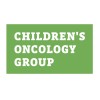
Study of BGB-11417 in Participants With Relapsed or Refractory Chronic Lymphocytic Leukemia or Small...
LeukemiaLymphoma3 moreThe purpose of this study is to evaluate the efficacy of BGB-11417 in participants with relapsed/refractory (R/R) chronic lymphocytic leukemia (CLL)/small lymphocytic lymphoma (SLL)

Imatinib Mesylate and Combination Chemotherapy in Treating Patients With Newly Diagnosed Philadelphia...
Acute Lymphoblastic LeukemiaB Acute Lymphoblastic Leukemia2 moreThis randomized phase III trial studies how well imatinib mesylate works in combination with two different chemotherapy regimens in treating patients with newly diagnosed Philadelphia chromosome positive acute lymphoblastic leukemia (ALL). Imatinib mesylate has been shown to improve outcomes in children and adolescents with Philadelphia chromosome positive (Ph+) ALL when given with strong chemotherapy, but the combination has many side effects. This trial is testing whether a different chemotherapy regimen may work as well as the stronger one but have fewer side effects when given with imatinib. The trial is also testing how well the combination of chemotherapy and imatinib works in another group of patients with a type of ALL that is similar to Ph+ ALL. This type of ALL is called "ABL-class fusion positive ALL", and because it is similar to Ph+ ALL, is thought it will respond well to the combination of agents used to treat Ph+ ALL.

VSV-hIFNbeta-NIS in Treating Patients With Relapsed or Refractory Multiple Myeloma, Acute Myeloid...
B-Cell Non-Hodgkin LymphomaHistiocytic and Dendritic Cell Neoplasm18 moreThis phase I trial studies the best dose and side effects of recombinant vesicular stomatitis virus carrying the human NIS and IFN beta genes (VSV-hIFNbeta-sodium iodide symporter [NIS]) with or without cyclophosphamide or ipilimumab and nivolumab in treating patients with multiple myeloma, acute myeloid leukemia (AML) or lymphoma that has come back or does not respond to treatment. A virus, called VSV-hIFNbeta-NIS, which has been changed in a certain way, may be able to kill cancer cells without damaging normal cells. Cyclophosphamide is in a class of medications called alkylating agents. It works by damaging the cell's DNA and may kill cancer cells. It may also lower the body's immune response. Immunotherapy with ipilmumab and nivolumab may induce changes in body's immune system and may interfere with the ability of tumor cells to grow and spread. Giving VSV-hIFNbeta-NIS and ruxolitinib phosphate may work better at treating multiple myeloma, acute myeloid leukemia and T-cell lymphoma.

A Study of Venetoclax in Participants With Relapsed or Refractory Chronic Lymphocytic Leukemia/Small...
Chronic Lymphocytic Leukemia (CLL)Small Lymphocytic Lymphoma (SLL)This is a Phase 2, open-label, multicenter study, evaluating the efficacy of venetoclax in participants with relapsed or refractory Chronic Lymphocytic Leukemia (CLL)/Small Lymphocytic Lymphoma (SLL) either in presence of 17p deletion (Cohort 1) or those who have failed a B-receptor signaling pathway inhibitor (BCRI) therapy and who have also failed, or were unable to receive chemoimmunotherapy (CIT) irrespective of 17p status (Cohort 2).

Inotuzumab Ozogamicin and Combination Chemotherapy in Treating Patients With Acute Lymphoblastic...
B Acute Lymphoblastic Leukemia With t(9;22)(q34.1;q11.2); BCR-ABL1B Acute Lymphoblastic Leukemia9 moreThis phase I/II trial studies the side effects and best dose of inotuzumab ozogamicin and to see how well it works when given together with combination chemotherapy in treating patients with acute lymphoblastic leukemia. Inotuzumab ozogamicin is a monoclonal antibody, called inotuzumab, linked to a toxic agent called N-acetyl-gamma-calicheamicin dimethyl hydrazide (CalichDMH). Inotuzumab attaches to CD22 positive cancer cells in a targeted way and delivers CalichDMH to kill them. Immunotherapy with monoclonal antibodies, such as blinatumomab, may help the body's immune system attack the cancer, and may interfere with the ability of tumor cells to grow and spread. Drugs used in chemotherapy work in different ways to stop the growth of cancer cells, either by killing the cells, by stopping them from dividing, or by stopping them from spreading. Giving inotuzumab ozogamicin together with combination chemotherapy may be a better treatment for acute lymphoblastic leukemia.

Cladribine and Rituximab in Treating Patients With Hairy Cell Leukemia
Hairy Cell LeukemiaRecurrent Hairy Cell LeukemiaThis phase II trial studies the side effects and how well cladribine and rituximab work in treating patients with hairy cell leukemia. Drugs used in chemotherapy, such as cladribine, work in different ways to stop the growth of cancer cells either by killing the cells, by stopping them from dividing, or by stopping them from spreading. Immunotherapy with monoclonal antibodies, such as rituximab, may help the body's immune system attack the cancer, and may interfere with the ability of tumor cells to grow and spread. Giving cladribine together with rituximab may kill more cancer cells.

Anti-CD22 Chimeric Receptor T Cells in Pediatric and Young Adults With Recurrent or Refractory CD22-expressing...
NHLLarge Cell Lymphoma8 moreBackground: - One type of cancer therapy takes blood cells from a person, changes them in a lab, then gives the cells back to the person. In this study, researchers are using an anti-CD22 gene, a virus, and an immune receptor to change the cells. Objective: - To see if giving anti-CD22 Chimeric Antigen Receptor (CAR) cells to young people with certain cancers is safe and effective. Eligibility: - People ages 1-39 with a leukemia or lymphoma that has not been cured by standard therapy. Design: Participants will be screened to ensure their cancer cells express the CD22 protein. They will also have medical history, physical exam, blood and urine tests, heart tests, scans, and x-rays. They may give spinal fluid or have bone marrow tests. Participants may have eye and neurologic exams. Participants will get a central venous catheter or a catheter in a large vein. Participants will have white blood cells removed. Blood is removed through a needle in an arm. White blood cells are removed. The rest of the blood is returned by needle in the other arm. The cells will be changed in a laboratory. Participants will get two IV chemotherapy drugs over 4 days. Some will stay in the hospital for this. All participants will be in the hospital to get anti-CD22 CAR cells through IV. They will stay until any bad side effects are gone. Participants will have many blood tests. They may repeat some screening exams. Participants will have monthly visits for 2-3 months, then every 3-6 months. They may repeat some screening exams. Participants will have follow-up for 15 years.

Prospective, Multicentric, Phase II Randomized Controlled Trial on Two Parallel Groups Comparing...
Large Granular Lymphocytes LeukemiaLGL leukemia represents a rare subtype of chronic T or NK lymphoproliferative disorders. It is an indolent disease, the main hematological or autoimmune complications lead to a treatment in more than 60% of patients. Investigators set up at the University Hospital of Rennes, a database of more than 300 patients with LGL leukemia from major French services that support this disease, and published in 2010 the largest series of patients in the world (n = 229). However, the limited heterogeneity and retrospective data collected, as all previously released, makes it difficult the proposal of consensual treatment options. If first and second line treatments are based on the use of immunosuppression with methotrexate, cyclophosphamide, or cyclosporin A, no molecule has proven superiority over others. Methotrexate and cyclophosphamide are mainly used in the first line. Invetigators just have in the literature data on about 100 patients treated with either of these drugs. Combining the results of our series with those in the literature, invetigators estimate the respective overall response rate (RG) and complete response rate (CR) in 55% and 30% for methotrexate, and 60% and 50% for cyclophosphamide. Thus, there are four objective in this study : to compare the respective efficacies of methotrexate and cyclophosphamide when administered as first-line therapies in patients suffering from T/NK LGL leukemia with severe neutropenia or neutropenia associated with infections, and/or anemia requiring transfusions, and/or auto-immune associated disease to evaluate the percentage of patients refractory to methotrexate or cyclophosphamide for which a second line treatment is efficacious to explore, in case of non-response to the first-line therapy, the efficacy of ciclosporine A, the comparison being performed with the treatment which was not administered in the first-line therapy to evaluate the response rate according to the phenotypic subtype of LGL leukemia.

A Clinical Research of CAR T Cells Targeting CD19 Positive Malignant B-cell Derived Leukemia and...
LeukemiaLymphomaThe main purpose of this research is to verify the safety of CD19 targeted chimeric antigen receptor T cells and to determine the proper dosage of CAR T cells infused.

Personalized NK Cell Therapy in CBT
Accelerated Phase Chronic Myelogenous LeukemiaBCR-ABL1 Positive26 moreThis phase II clinical trial studies how well personalized natural killer (NK) cell therapy works after chemotherapy and umbilical cord blood transplant in treating patients with myelodysplastic syndrome, leukemia, lymphoma or multiple myeloma. This clinical trial will test cord blood (CB) selection for human leukocyte antigen (HLA)-C1/x recipients based on HLA-killer-cell immunoglobulin-like receptor (KIR) typing, and adoptive therapy with CB-derived NK cells for HLA-C2/C2 patients. Natural killer cells may kill tumor cells that remain in the body after chemotherapy treatment and lessen the risk of graft versus host disease after cord blood transplant.
